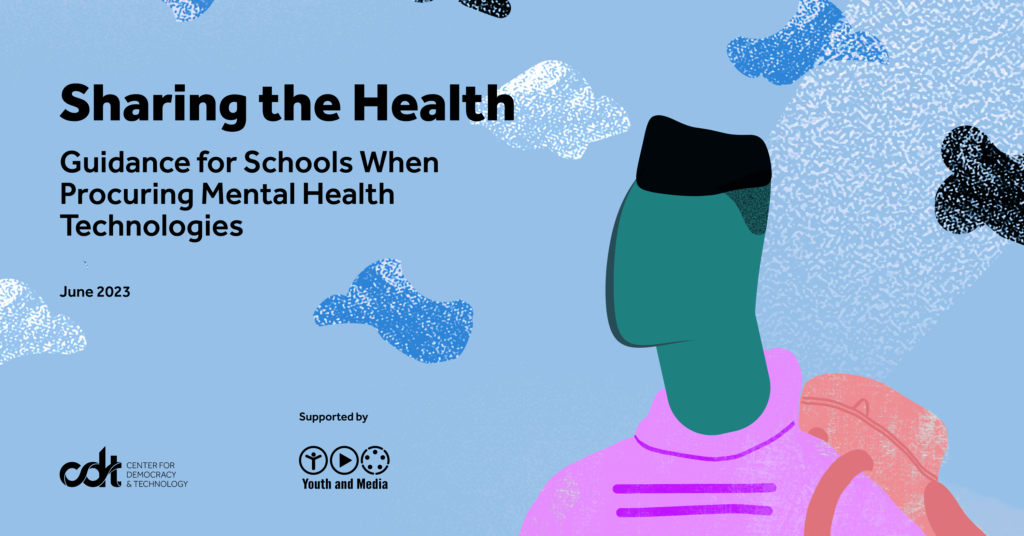Equity in Civic Technology, Privacy & Data
Report – Sharing the Health: Guidance for Schools When Procuring Mental Health Technologies

CDT thanks Youth and Media team members Sandra Cortesi, Madeline McGee, Leah Plunkett, and Elizabeth Sylvan for their advisory role in this project.
Although student mental health has long been a priority for schools, recent discussions of a youth mental health crisis have pushed the issue to the forefront. In particular, concerns about students struggling with their mental health or harming themselves as reflected in a recent CDC report, especially as students grapple with the aftermath of COVID-19 and school shootings rise in prevalence, are urgent issues for schools.
Various factors, including staffing challenges (e.g., shortage of school counselors and teachers often thinly stretched across many responsibilities), limited financial resources, weighty expectations placed on schools (such as identifying students at risk of harming themselves or others), as well as tech innovation, are pushing schools to find new, tech-based approaches to helping students manage their mental health. Most schools do not have the expertise in-house to develop the type of technology they want, so many are turning to vendor-provided products.
These vendor offerings are focused on understanding, addressing, and/or treating students’ mental health. While these products have the potential to help schools address this critical issue, the landscape of mental health products demands careful consideration on the part of schools that wish to procure these tools. Though it is typically adopted with the goal of helping and supporting students, using technology that is not designed for the education context, ineffective at its stated goals, or insufficiently protective of student privacy, could do much more harm than good for students. Consequently, it is important that schools procuring mental health technologies address these pitfalls. This report offers guidance to help schools and districts procure technology that will help them meet students’ needs, rather than inadvertently placing students at risk of further harm.


